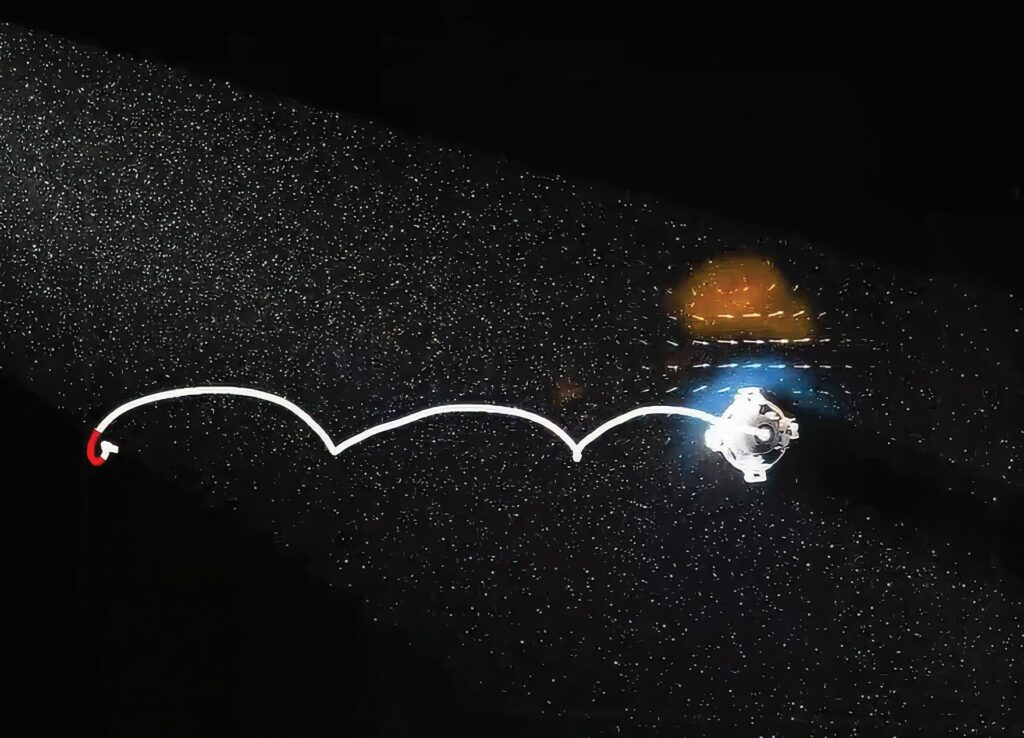Surfing underwater currents to reduce power

(Image courtesy of John O. Dabiri and Peter Gunnarson)
Underwater vehicles have to manage a complex environment of currents, fighting against many flows as they attempt to stay on course, writes Nick Flaherty.
Peter Gunnarson and John Dabiri at the California Institute of Technology have designed an underwater robot that makes use of these currents to cut down on the energy needed to travel, “surfing” vortices to make its way to its destination.
The project used the Caltech Autonomous Reinforcement Learning (CARL) robot equipped with an onboard inertial measurement unit, ten motors to allow movement in all three axes, and a simple but effective algorithm. If the magnitude of the acceleration in the crossflow-direction exceeded a threshold, CARL would swim in the same direction as the acceleration. The robot was tested in a 1.5 m deep and 5 m long tank, where vortex rings were generated by pulsing a wall-mounted thruster.
Using the algorithm, CARL was able to surf the length of the tank using one-fifth of the energy as a robot without the same programming.
The linear acceleration as sensed by the onboard IMU was found to correspond with the pressure gradient of the background flow, and rotational acceleration is suggested as a method for measuring the vorticity of the vortex ring.
The success suggests that a similar technique could be used to allow autonomous vehicles to improve their efficiencies significantly by interacting with background flows.
UPCOMING EVENTS























